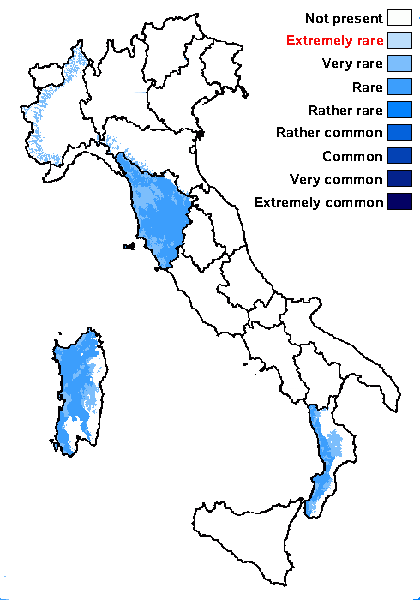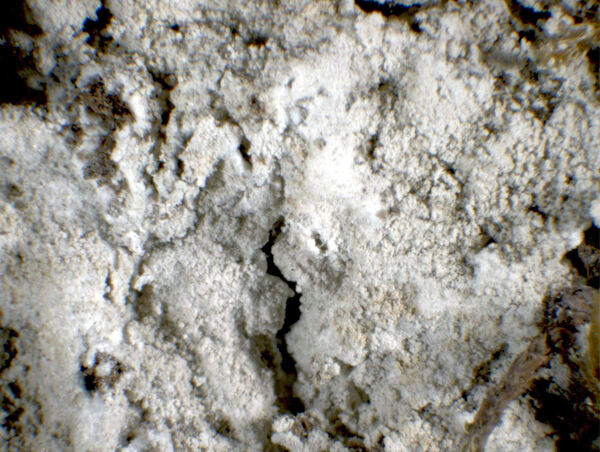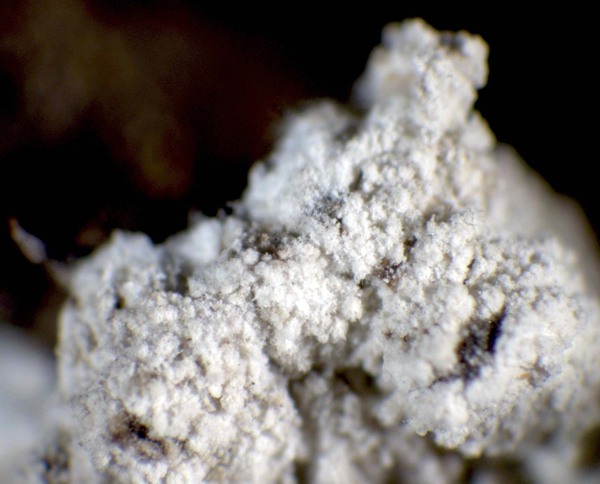Lepraria nylanderiana Kümmerl. & Leuckert
Bibl. Lichenol., 58: 250, 1995.
Synonyms:
Distribution: N - Piem (Baruffo & al. 2006, Favero-Longo & al. 2006b), Emil (Baruffo & al. 2006, Fariselli & al. 2020). C - Tosc (Baruffo & al. 2006), Sar (Leuckert & al. 1995, Nöske 2000, Zedda 2000a, 2002, 2002b, Zedda & al. 2001). S - Cal (Baruffo & al. 2006).
Description: Thallus leprose, whitish to pale bluish grey, marginally more or less well-delimited, thick, often rosette-shaped and indistinctly lobulate, sometimes with a greyish hypothallus. Upper surface covered in a soft mass of coarse, 100-300 µm wide, soredia-like granules with short projecting hyphae. Hyphae of the thallus 3-5 µm thick. Medulla thick to thin and poorly defined, whitish, sometimes exposed in places. Photobiont chlorococcoid, the cells 7-15 µm in diam. Spot tests: K+ bright lemon-yellow, C-, KC-, P+ bright orange-yellow, UV-. Chemistry: thamnolic and roccellic (angardianic) acids, occasionally with traces of atranorin.Note: on base-rich siliceous rocks and soil, more rarely on subneutral bark in shaded, rain-sheltered situations, often within forests; most frequent in Tyrrhenian Italy, much overlooked and/or misunderstood, certainly more common. According to Baruffo & al. (2006) it can be considered as a good indicator of long ecological continuity, since it always occurs in old and well-preserved forests.
Growth form: Leprose
Substrata: rocks, bark, soil, terricolous mosses, and plant debris
Photobiont: green algae other than Trentepohlia
Reproductive strategy: mainly asexual, by soredia, or soredia-like structures (e.g. blastidia)
In underhangs rarely wetted by rain
Commonnes-rarity: (info)
Alpine belt: absent
Subalpine belt: absent
Oromediterranean belt: absent
Montane belt: very rare
Submediterranean belt: absent
Padanian area: absent
Humid submediterranean belt: rare
Humid mediterranean belt: very rare
Dry mediterranean belt: absent

Predictive model
Herbarium samples
Growth form: Leprose
Substrata: rocks, bark, soil, terricolous mosses, and plant debris
Photobiont: green algae other than Trentepohlia
Reproductive strategy: mainly asexual, by soredia, or soredia-like structures (e.g. blastidia)
In underhangs rarely wetted by rain
Commonnes-rarity: (info)
Alpine belt: absent
Subalpine belt: absent
Oromediterranean belt: absent
Montane belt: very rare
Submediterranean belt: absent
Padanian area: absent
Humid submediterranean belt: rare
Humid mediterranean belt: very rare
Dry mediterranean belt: absent

Predictive model
| Herbarium samples |
 INDEX FUNGORUM
INDEX FUNGORUM
 GBIF
GBIF
 DOLICHENS
DOLICHENS





